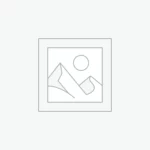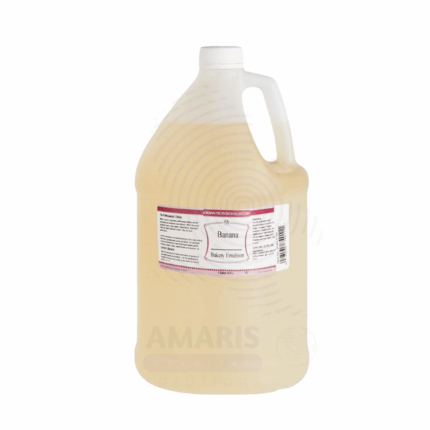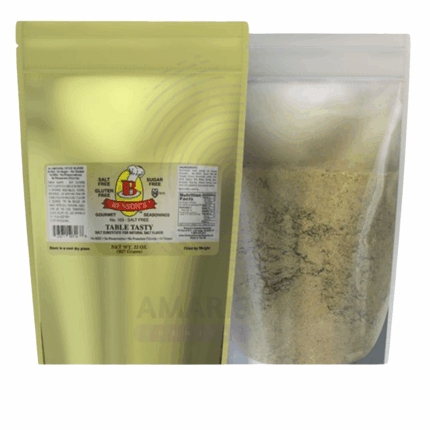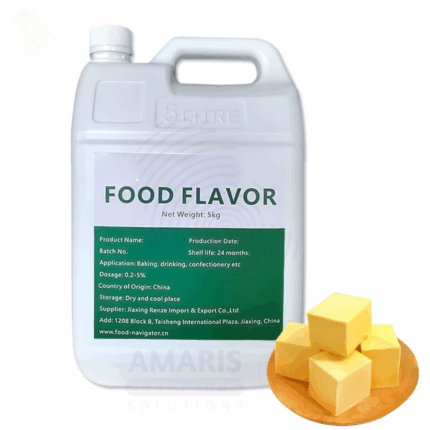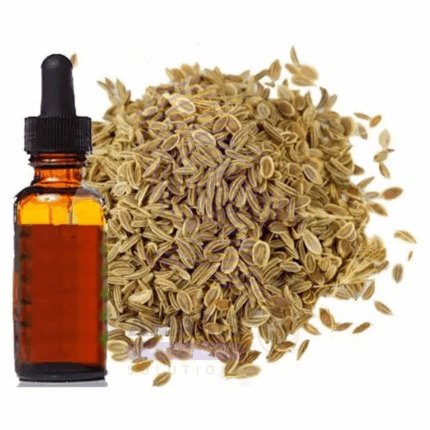Malt Extract
Whatsapp Order
Malt Extract is a concentrated syrup or powder derived from malted barley or other cereal grains through enzymatic extraction. It is produced by steeping, germinating, and drying grains, then mashing and concentrating the liquid extract. Rich in sugars (mainly maltose), amino acids, vitamins (notably B-complex), and minerals, malt extract is valued for its natural sweetness, nutritional content, and fermentable properties. Available in liquid (syrup) or dry (powdered) forms, it is widely used in the food, beverage, pharmaceutical, and animal nutrition industries.
Description
Table of Contents
Toggle
Malt Extract
Primary Uses
- Food & Beverage Industry
- Sweetener: Used as a natural sweetener in baked goods, breakfast cereals, granola bars, and confectionery.
- Flavoring Agent: Adds a characteristic malt flavor to cookies, breads, beverages, and sauces.
- Fermentation Substrate: Supplies fermentable sugars in beer brewing, cider production, and kombucha.
- Color Enhancer: Provides golden-brown color and glossy finish to baked products.
- Nutrient Enrichment: Used in health foods and energy drinks for its vitamin and mineral content.
- Cereal Processing: Improves texture and sweetness in puffed or extruded cereal products.
- Brewing & Distilling
- Wort Base: Core ingredient in beer brewing (especially for home brewers), acting as a ready-made wort.
- Yeast Growth Medium: Enhances fermentation by supplying essential nutrients to yeast cultures.
- Flavor Profile Developer: Contributes to the body, aroma, and head retention of beer.
- Pharmaceutical & Nutraceutical Industry
- Tonic Base: Used in malt-based tonics and elixirs to promote appetite and general well-being.
- Excipient: Acts as a sweetener and binder in syrups, lozenges, and chewable tablets.
- Nutrient Carrier: Delivers B-vitamins and iron in pediatric or convalescent supplements.
- Dietary Supplement Ingredient: Used in natural vitamin formulations and energy boosters.
- Infant & Geriatric Nutrition
- Digestive Aid: Included in infant foods and senior nutrition products to improve digestibility.
- Energy Source: Provides readily absorbable carbohydrates for energy without added refined sugars.
Secondary Uses
- Animal Feed & Pet Nutrition
- Palatability Enhancer: Improves taste and smell of pet food and livestock feed.
- Energy Source: Supplies quick energy and essential nutrients to poultry and ruminants.
- Probiotic Medium: Acts as a prebiotic or fermentation base in some probiotic feed additives.
- Cosmetic & Personal Care Products
- Skin Conditioner: Occasionally used in lotions, soaps, and shampoos for its moisturizing and nutrient-rich properties.
- Natural Fragrance: Adds a subtle malt aroma to certain grooming products.
- Microbiological Culture Media
- Growth Medium: Included in laboratory media for cultivating bacteria and fungi due to its rich sugar and nutrient profile.
- Biotech Applications: Used in fermentation and enzyme production industries.
- Bakery Improvers & Dough Conditioners
- Enzyme Source: Natural diastatic activity helps break down starches into sugars during baking.
- Dough Browning & Texture: Enhances crust color and internal crumb structure in artisanal breads.
- Home Brewing & DIY Food Preparation
- Syrup Base: Used in homemade beverages, vinegar, sauces, and non-alcoholic malt drinks.
- Fermentation Starter: Ideal for amateur brewers or kombucha makers as a sugar and nutrient source.
KEY PRODUCT FEATURES
1. Basic Identification Attributes
- Chemical Name (IUPAC): Mixture; primarily maltose (4-O-α-D-glucopyranosyl-D-glucose)
- Common/Trade Name: Malt Extract
- CAS Number: 8002-48-0 (generic)
- HS Code: 1901.90.90 (depends on form and use)
- Synonyms: Diastatic extract; Barley malt extract; Cereal extract; Dry malt; Liquid malt extract (LME); Dried malt extract (DME)
2. Physical & Chemical Properties
- Physical State: Viscous liquid (syrup) or hygroscopic powder
- Color & Odor: Amber to dark brown; characteristic sweet, malty odor
- Solubility: Completely soluble in water
- pH: Typically 4.5–6.0
- Brix: ~78–80% (for liquid extract)
- Sugar Content: Primarily maltose, glucose, and dextrins
- Moisture (for powder): <5%
- Nutritional Content: Contains B-complex vitamins, iron, phosphorus, and amino acids
3. Safety & Hazard Attributes
- GHS Classification: Not classified as hazardous
- Toxicity: Non-toxic; food grade
- Exposure Limits: None established for normal use
- Allergens: May contain gluten depending on source grain (e.g., barley)
4. Storage & Handling Attributes
- Storage Conditions: Store in a cool, dry place away from direct sunlight and moisture
- Container Type: Food-grade drums, pails, bags, or bulk tanks
- Shelf Life:
- Liquid Extract: 12–18 months
- Dry Extract: Up to 24 months (if sealed and dry)
- Handling Precautions: Hygroscopic; keep tightly closed to prevent moisture absorption and microbial growth
5. Regulatory & Compliance Attributes
- Approved for use in food by FDA, EFSA, Codex Alimentarius
- Labeled as a food ingredient (natural extract)
- Must declare presence of allergens (e.g., gluten from barley) if applicable
- GMP- and food-grade compliant
6. Environmental & Health Impact
- Biodegradability: Fully biodegradable
- Ecotoxicity: Non-toxic to the environment
- Bioaccumulation: Not expected
- Carcinogenicity/Mutagenicity: Not classified
SAFETY HANDLING PRECAUTIONS
Safety Handling Precautions
- PPE Required: Gloves and apron if handling large quantities; mask for powder to prevent inhalation
- Handling Guidelines: Ensure good hygiene practices; clean spills promptly
- Storage Measures: Use sealed containers; avoid high humidity to prevent clumping or fermentation
First Aid Measures
- Inhalation: Move to fresh air; generally non-irritating unless inhaling powder
- Skin Contact: Wash with soap and water
- Eye Contact: Rinse thoroughly with water; seek medical help if irritation persists
- Ingestion: Safe for consumption in regulated quantities; consult medical advice for large accidental doses
Firefighting Measures
- Fire Hazards: Powder may be combustible in dust-air mixtures
- Extinguishing Media: Use water spray, CO₂, dry chemical, or foam
- Special Precautions: Avoid creating dust clouds in confined areas
- Hazardous Combustion Products: Carbon monoxide and carbon dioxide may form in a fire
Related products
Banana Liquid Flavour
Banana Liquid Flavour is a high-quality food-grade flavoring agent designed to replicate the sweet, creamy, and fruity aroma of ripe bananas. It is widely used in the food and beverage industry due to its excellent flavor stability, solubility in aqueous systems, and compatibility with various processing conditions. This flavoring is ideal for enhancing taste profiles in a wide range of culinary applications and is formulated to maintain its potency during baking, freezing, or high-temperature cooking processes. Its versatility makes it suitable for both commercial food production and artisanal applications.
Bitter Mask Powder Flavour Food Grade
Bitter Mask Powder Flavour Food Grade is a specialized food-grade powdered flavor designed to effectively mask and reduce bitterness in food and beverage formulations. It delivers a smooth, balanced sensory experience by suppressing undesirable bitter notes without affecting the overall flavor profile. This powder is ideal for use in pharmaceuticals, dietary supplements, functional foods, beverages, and nutraceutical products where bitterness can impact consumer acceptance. It offers excellent stability and easy incorporation into both dry and liquid matrices.
Butter Liquid Flavour
Butter Liquid Flavour is a premium food-grade liquid flavor designed to replicate the rich, creamy, and natural aroma and taste of fresh butter. It is formulated to provide an authentic buttery note with a smooth, rich profile, suitable for enhancing a wide range of food and beverage products. This flavor exhibits excellent stability in various formulations, making it ideal for use in bakery items, dairy products, confectionery, and savory snacks.
Cardamon liquid flavor
Cardamon liquid flavor is a high-quality food-grade flavor extract that captures the warm, aromatic, and slightly spicy essence of natural cardamom pods. Known for its unique fragrance and distinct sweet-spicy taste, this liquid flavor is ideal for enhancing the sensory profile of a variety of culinary and beverage products. It offers excellent stability and solubility, making it suitable for use in bakery, confectionery, beverages, dairy, and savory applications.
Celery Seed Oil
Celery Seed Oil is a concentrated essential oil obtained by steam distillation from the dried seeds of the Apium graveolens plant. It features a warm, spicy, earthy aroma with slightly bitter undertones and is rich in compounds like limonene, sedanolide, and selinene. Traditionally used in natural medicine for its anti-inflammatory, digestive, and diuretic properties, Celery Seed Oil is also increasingly recognized in cosmetic, aromatherapy, and flavoring applications. It is distinct from celery leaf oil, carrying a denser, more resinous aromatic profile and a stronger pharmacological potency.
Chocolate Powder Flavor food grade
Product Description
Chocolate Powder Flavor is a high-quality food-grade powdered flavoring agent that delivers an authentic, rich, and creamy chocolate taste to various food and beverage products. This powdered flavor is specially formulated for excellent dispersibility and stability, making it suitable for bakery items, confectionery, dairy products, beverages, and desserts. It enhances flavor profiles by providing a consistent, smooth chocolate aroma and taste, elevating the sensory experience of finished goods.
Clove Leaf Oil
Clove Leaf Oil is a high-phenol essential oil extracted via steam distillation from the leaves of Syzygium aromaticum (formerly Eugenia caryophyllata). It typically contains up to 80–85% eugenol, which gives it a sharper, more herbaceous aroma than clove bud oil. This oil is prized for its potent antiseptic, analgesic, antifungal, and antioxidant properties. Used in oral care, topical formulations, fragrances, cleaning agents, and agricultural applications, it is valued for both its therapeutic efficacy and aromatic profile.
Cubeb Oil
Cubeb Oil is an essential oil steam-distilled from the dried berries of Piper cubeba, a plant native to Java and parts of Southeast Asia. With a warm, spicy, woody, and slightly camphoraceous aroma, Cubeb Oil is rich in sesquiterpenes and monoterpenes such as sabinene, cubebene, and caryophyllene. It has traditionally been used in herbal medicine for respiratory and urinary support and in perfumery for its distinctive spicy-woody scent.
In modern formulations, Cubeb Oil is valued for its antimicrobial, anti-inflammatory, and stimulating properties. It is commonly used in natural perfumery, masculine fragrances, therapeutic massage blends, and respiratory wellness products.


 Preservatives(food)
Preservatives(food) Flavor Enhancers
Flavor Enhancers Acidulants
Acidulants Sweeteners
Sweeteners Antioxidants
Antioxidants Colorants(food)
Colorants(food) Nutraceutical Ingredients (food)
Nutraceutical Ingredients (food) Nutrient Supplements
Nutrient Supplements Emulsifiers
Emulsifiers
 Collectors
Collectors Dust Suppressants
Dust Suppressants Explosives and Blasting Agents
Explosives and Blasting Agents Flocculants and Coagulants
Flocculants and Coagulants Frothers
Frothers Leaching Agents
Leaching Agents pH Modifiers
pH Modifiers Precious Metal Extraction Agents
Precious Metal Extraction Agents
 Antioxidants(plastic)
Antioxidants(plastic) Colorants (Pigments, Dyes)
Colorants (Pigments, Dyes) Fillers and Reinforcements
Fillers and Reinforcements Flame Retardants
Flame Retardants Monomers
Monomers Plasticizers
Plasticizers Polymerization Initiators
Polymerization Initiators Stabilizers (UV, Heat)
Stabilizers (UV, Heat)
 Antifoaming Agents
Antifoaming Agents Chelating Agents
Chelating Agents Coagulants and Flocculants
Coagulants and Flocculants Corrosion Inhibitors
Corrosion Inhibitors Disinfectants and Biocides
Disinfectants and Biocides Oxidizing Agents
Oxidizing Agents pH Adjusters
pH Adjusters Scale Inhibitors( water)
Scale Inhibitors( water)
 Antioxidants(cosmetic)
Antioxidants(cosmetic) Emollients
Emollients Fragrances and Essential Oils
Fragrances and Essential Oils Humectants
Humectants Preservatives
Preservatives Surfactants(cosmetic)
Surfactants(cosmetic) Thickeners
Thickeners UV Filters
UV Filters
 Fertilizers
Fertilizers Soil Conditioners
Soil Conditioners Plant Growth Regulators
Plant Growth Regulators Animal Feed Additives
Animal Feed Additives Biostimulants
Biostimulants Pesticides (Herbicides, Insecticides, Fungicides)
Pesticides (Herbicides, Insecticides, Fungicides)
 Active Pharmaceutical Ingredients (APIs)
Active Pharmaceutical Ingredients (APIs) Excipients
Excipients Solvents(pharmaceutical)
Solvents(pharmaceutical) Antibiotics
Antibiotics Antiseptics and Disinfectants
Antiseptics and Disinfectants Vaccine Adjuvants
Vaccine Adjuvants Nutraceutical Ingredients (pharmaceutical)
Nutraceutical Ingredients (pharmaceutical) Analgesics & Antipyretics
Analgesics & Antipyretics
 Analytical Reagents
Analytical Reagents Solvents(lab)
Solvents(lab) Chromatography Chemicals
Chromatography Chemicals Spectroscopy Reagents
Spectroscopy Reagents microbiology-and-cell-culture-reagents
microbiology-and-cell-culture-reagents Molecular Biology Reagents
Molecular Biology Reagents Biochemical Reagents
Biochemical Reagents Inorganic and Organic Standards
Inorganic and Organic Standards Laboratory Safety Chemicals
Laboratory Safety Chemicals Specialty Laboratory Chemicals(Special Laboratory Equipment)
Specialty Laboratory Chemicals(Special Laboratory Equipment)
 Demulsifiers
Demulsifiers Hydraulic Fracturing Fluids
Hydraulic Fracturing Fluids Scale Inhibitors(oil)
Scale Inhibitors(oil) Surfactants(oil)
Surfactants(oil) Drilling Fluids
Drilling Fluids
 Dyes and Pigments
Dyes and Pigments Bleaching Agents
Bleaching Agents Softening Agents
Softening Agents Finishing Agents
Finishing Agents Antistatic Agents
Antistatic Agents
 Admixtures
Admixtures Waterproofing Agents
Waterproofing Agents Sealants and Adhesives
Sealants and Adhesives Curing Compounds
Curing Compounds Concrete Repair Chemicals
Concrete Repair Chemicals Anti-Corrosion Coatings
Anti-Corrosion Coatings
 Surfactants(cleaning)
Surfactants(cleaning) Builders
Builders Enzymes
Enzymes Solvents (Cleaning)
Solvents (Cleaning) Fragrances
Fragrances
 Electronic Chemicals
Electronic Chemicals Catalysts
Catalysts Lubricants
Lubricants Photographic Chemicals
Photographic Chemicals Refrigerants
Refrigerants Automotive chemicals
Automotive chemicals Pyrotechnic Chemicals
Pyrotechnic Chemicals
 Biodegradable Surfactants
Biodegradable Surfactants Bio-based Solvents
Bio-based Solvents Renewable Polymers
Renewable Polymers Carbon Capture Chemicals
Carbon Capture Chemicals Wastewater Treatment Chemicals
Wastewater Treatment Chemicals
 Pigments
Pigments Solvents(paint)
Solvents(paint) Specialty Coatings
Specialty Coatings Binders/Resins
Binders/Resins Additives
Additives Driers
Driers Anti-Corrosion Agents
Anti-Corrosion Agents Functional Coatings
Functional Coatings Application-Specific Coatings
Application-Specific Coatings
 Fresh Herbs
Fresh Herbs Ground Spices
Ground Spices Whole Spices
Whole Spices Spice Blends
Spice Blends Dried Herbs
Dried Herbs
 Leavening Agents
Leavening Agents Dough Conditioners
Dough Conditioners Flour Treatments
Flour Treatments Fat Replacers
Fat Replacers Decoratives
Decoratives Preservatives(baking)
Preservatives(baking)
 Plasticizers & Softeners
Plasticizers & Softeners Reinforcing Agents
Reinforcing Agents Adhesion Promoters
Adhesion Promoters Vulcanizing Agents
Vulcanizing Agents Antidegradants
Antidegradants Blowing Agents
Blowing Agents Fillers & Extenders
Fillers & Extenders Accelerators & Retarders
Accelerators & Retarders
